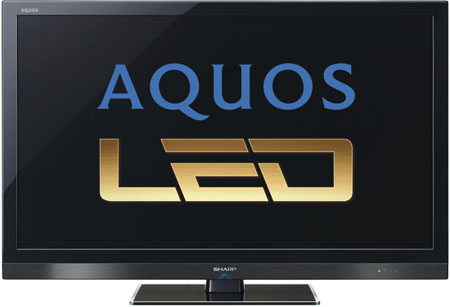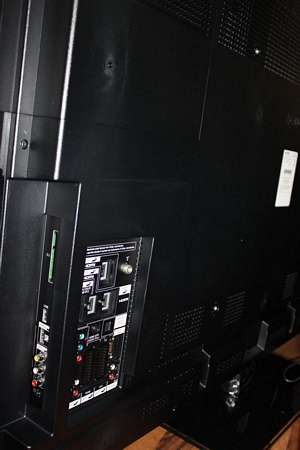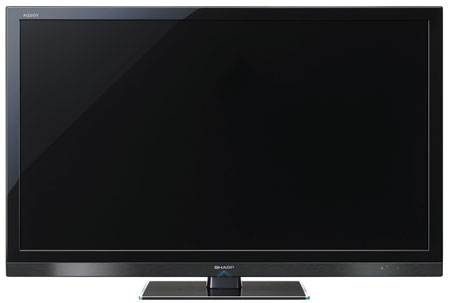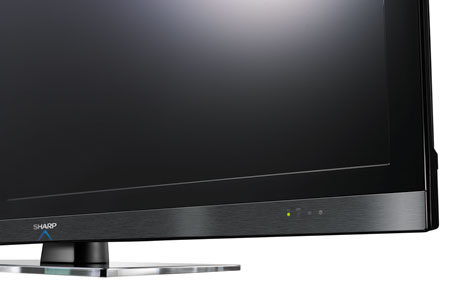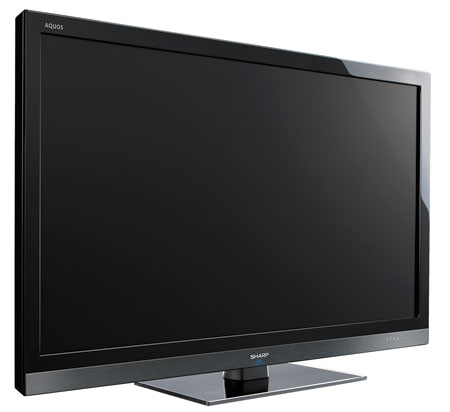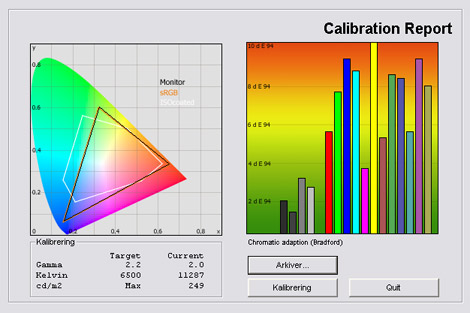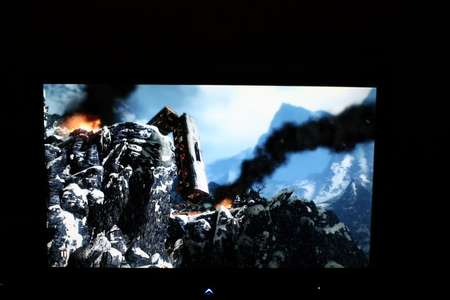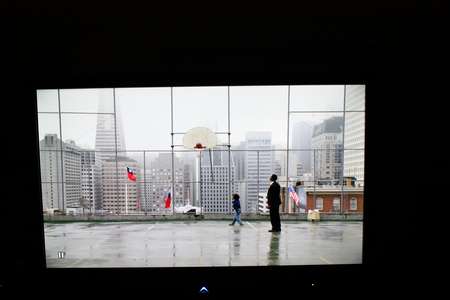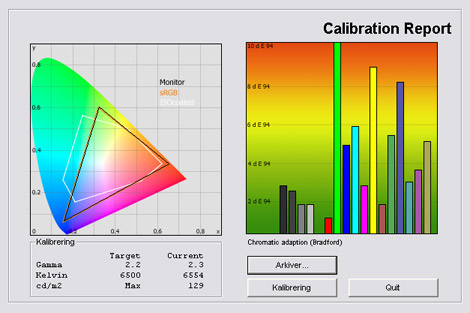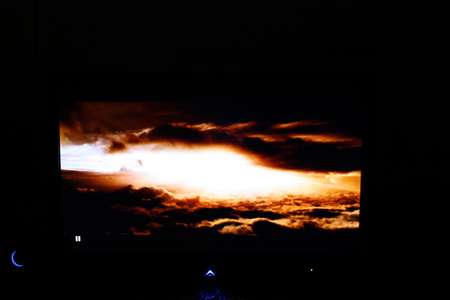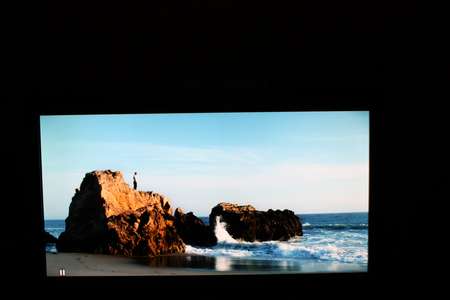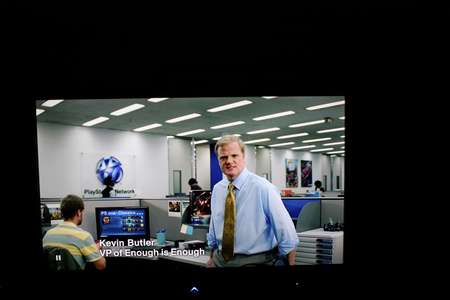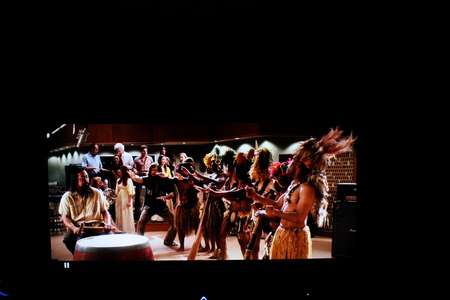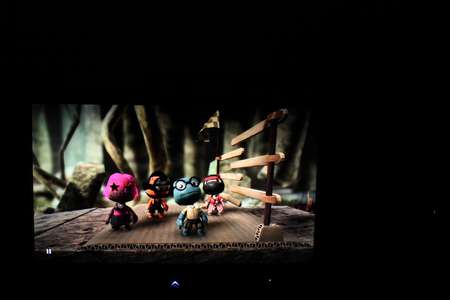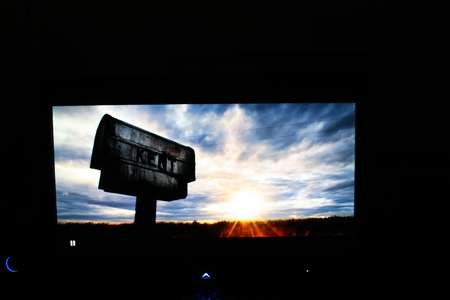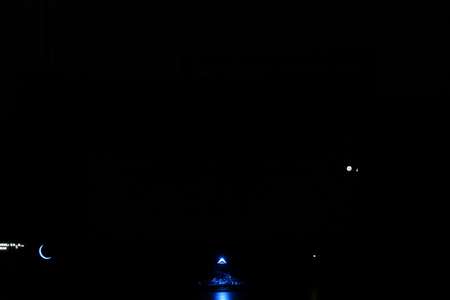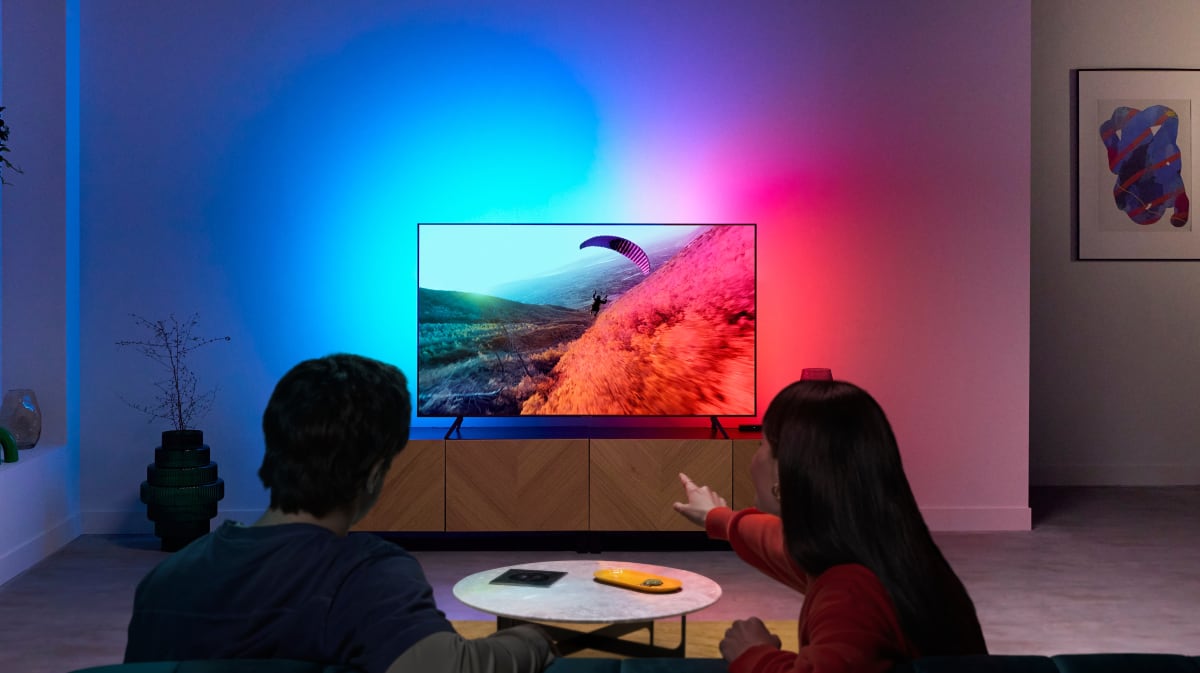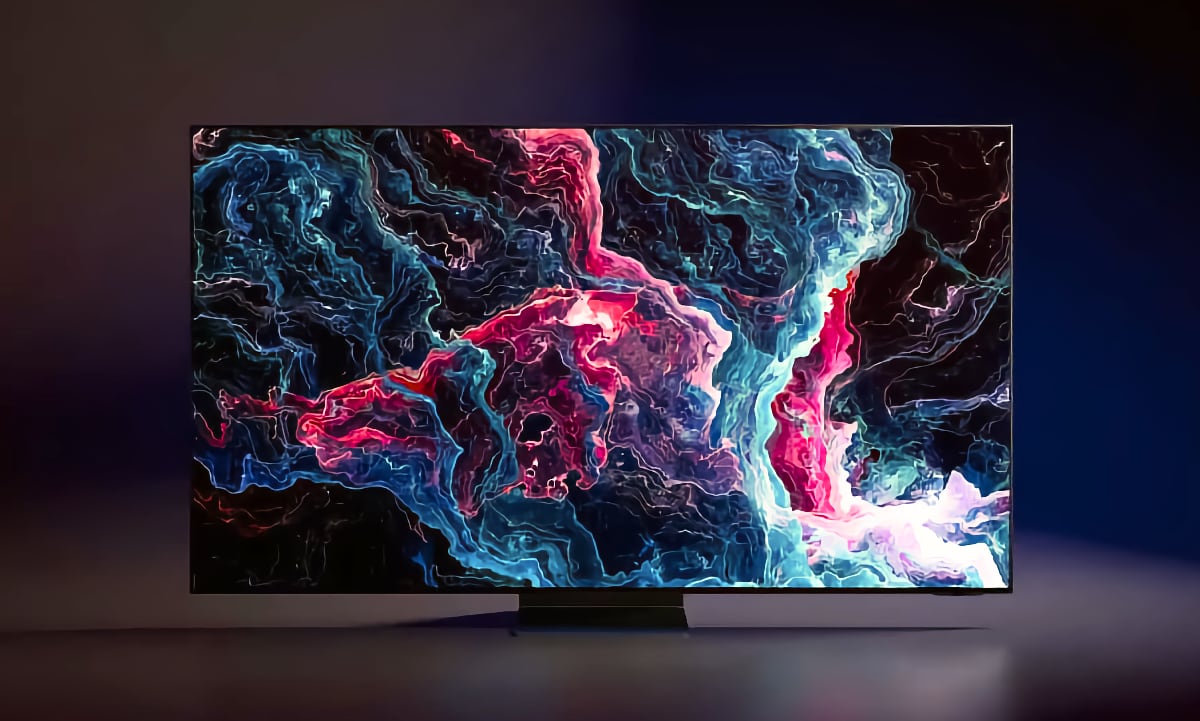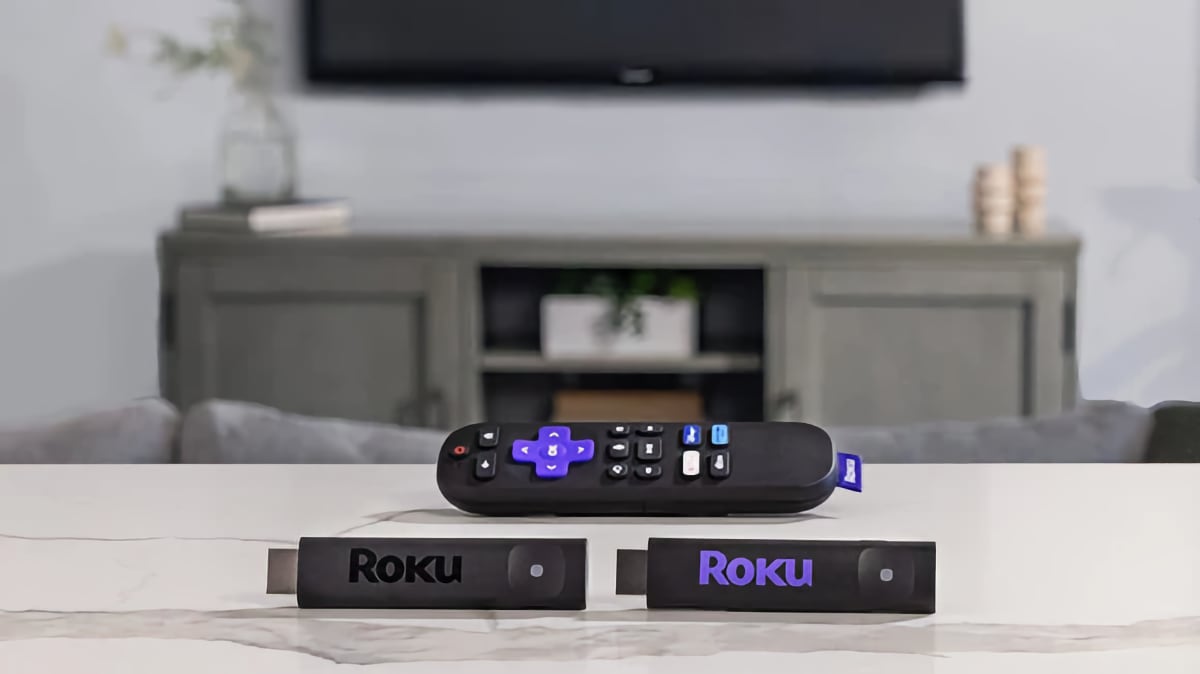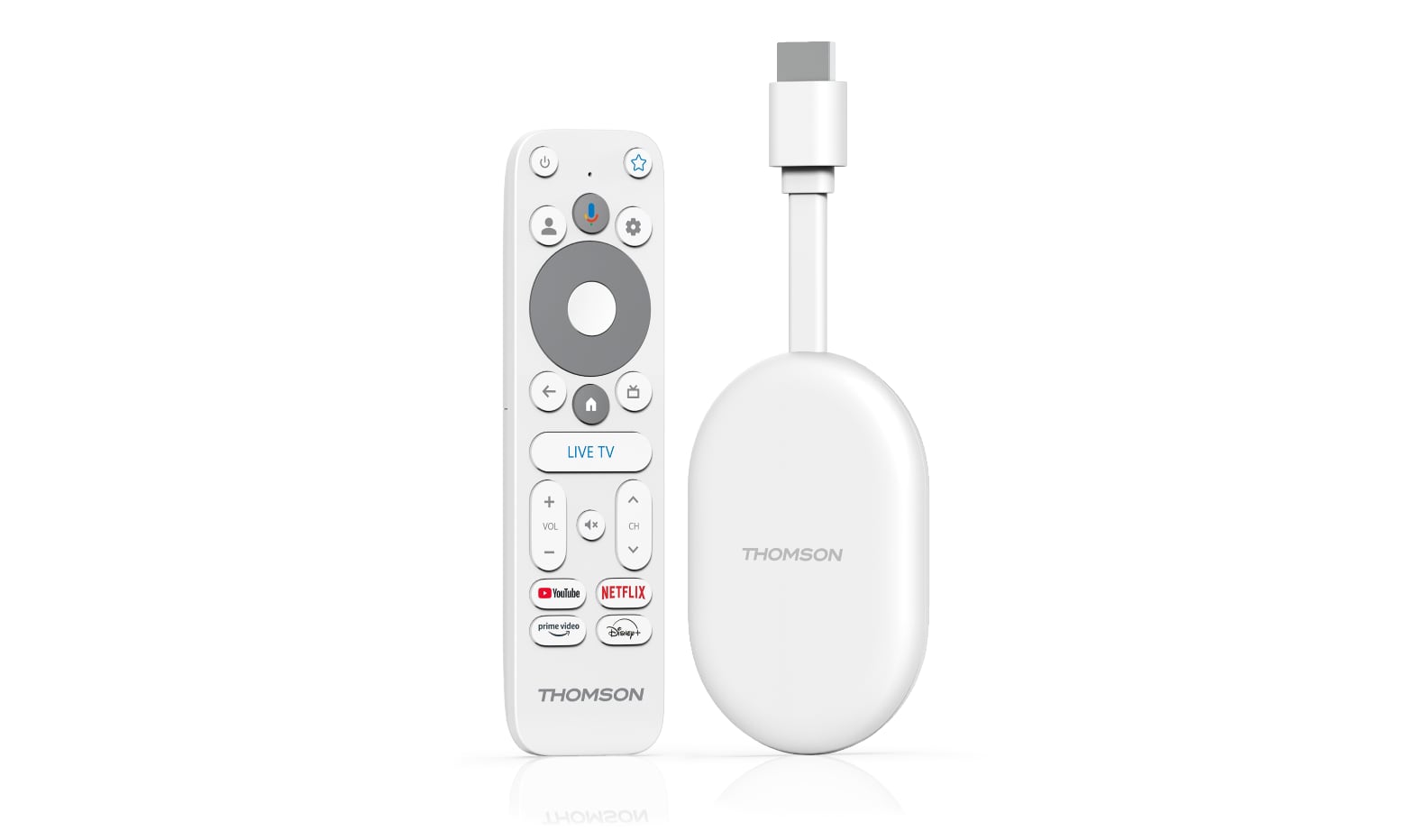Sharp LE705
Sharp LE705 review
Sharp recently introduced their LCD-TVs with LED backlight with the LE600 and LE700 series, and after a few months the new LE705 LED series replaced the LE700. LE705 has a different and more streamlined design compared to the LE700 (that was reviewed on FlatpanelsDK), and features a new Optical Filter that should improve picture quality and viewing angles.
In this review we look at the LE705 series to see how Sharp performs in a rapidly changing TV market. We’re also excited to see if the backlit LED system improves picture quality over the Edge LED technology in the Samsung LED-TVs.
LE705 is available in 32, 40, 46 and 52 inches called LC32LE705, LC40LE705, LC46LE705, and LC52LE705.
Subscribe to our Newsletter to receive e-mails when new reviews are online.
Panel size: 40" widescreen (LCD) Resolution: 1920x1080 Response time: 4 ms Contrast ratio: 2.000.0000:1 (dynamic) Brightness: 450 cd/m2 Colour support: 16,7 million colours Signal processing: 8 bit for each colour Viewing angles (H/V): 178/178 Dot pitch: - Panel: LCD (Sharp) Wall mounting: Swivel stand: Dimensions (HxWxD): - (witout stand) Weight - kg Built-in speakers: Input formats: 480p/i, 576p/i, 720p, 1080i & 1080p (50, 60 & 24p) 1:1 pixel mapping: Inputs • VGA • DVI (can be converted through HDMI)
• Audio (type) (Audio in/out)
• SCART (2 inputs)
• S-video • Composite • Component 
• HDMI (4 inputs)
• Other Outputs • Audio (type) (1 output)
• SCART • S/PDIF (optical)
Tuners • Analog • DVB-T • DVB-T (MPEG4) • DVB-C • DVB-C (MPEG4) • DVB-S • DVB-S (MPEG4) Price and retailer:
| US retailer | UK retailer |
| |  |
Our first impressions
Sharp LE705 looks much similar to the LE600 variant, and abandons the design from the LE700 range that it replaces. LE705 has a black bezel with a grey aluminum line at the bottom.The stand provides a solid foundation with its rectangular shape and complements the design of the TV.
All inputs are located on the back and pointing towards the wall. Sharp has not learned its lesson yet.
The LE705 is not as thin as the Edge LED models like the Samsung’s LED-TVs but a bit thinner than traditional LCD-TVs with CCFL backlight.
LE705 also has some inputs on the right side of the TV for connecting digital devices such as cameras and camcorders.
Test tools
Our TV signal is DVB-S (satellite) from Canal Digital and DVB-T (terrestrial). We also have an analogue TV connection.Testing is done with the DVE (digital video essentials) and Peter Finzel test DVD. Testing is also done with DVD, TV, Blu-Ray and Media center/PC.
We also use our own monitorTest . The software supports some of the traditional test patterns used to evaluate displays as well as some new and unique test patterns developed by the people here on Flatpanels.
Sony PlayStation 3 is our Blu-Ray player.
Functionality
The remote is not very pretty, and Sharp has decided not to change anything going from the LE700 to LE705. The buttons seem a bit too small. The design is very industrial and dull and the feeling is not good.Screen menus are similar to older Sharp TV sets, which is good in my opinion. We find some different picture setting options and the TV can also be configured to skip inactive input sources.
In the picture settings menu you can control RGB (red, green, blue), as well as traditional parameters such as backlight, contrast, tint etc. mode. Sharp LC-40LE705 also has an Eco mode to help reduce energy consumption that is changing the intensity of the backlight according to the surroundings. This can also be done manually in the display menu.
Sharp has an advanced CMS system (for adjusting colors) which gives pro. calibrators or advanced users the right tools to improve picture accuracy. Finally, LE705 has an USB input supporting music and pictures. LE705 has no DLNA; however. We miss that.
Energy consumption
Energy consumption measurements on Sharp 40LE705 below.| Out-of-Box | After calibration | |
| Standby | 0,1 W | 0,1 W |
| SD | 64 W | 50,5 W |
| HD | 64 W | 50,5 W |
Sharp LC40LE705 consumes only 50.5 W after calibration; the lowest number we have seen on a 40-42 inch TV so fair and it also beats the LE700.
Also, please note that the flat panel TV uses less power after calibration. This is common on flat panel displays because many picture parameters are reduced during calibration.
Picture quality
Before I move on to talk about picture quality and calibration let me explain what LED means on Sharp LE705.Sharp LE705 is different from Samsung’s so-called “LED-TVs” as well as the Philips 9704H. Philips has used LEDs with local dimming which means that the LEDs can be dimmed in zones enabling the TV to display very deep black levels, while achieving perfect light homogeneity (no clouding/backlight bleeding).
Samsung is using the Edge LED system where LEDs are located along the edges of the panel. This enables very slim frames but does not enable local dimming nor better light homogeneity.
Sharp’s LE705 has a backlit LED – like Philips 9704H – but no local dimming. This means that black levels won’t improve much but that we can expect better light homogeneity as well as lower power consumption.
Out-of-box picture quality is measured below. The only thing turned off was the eco-mode.
The graph says this:
The number on the left is the delta value. Delta is a difference between two factors; here it’s the difference between the measured colour on the panel and the actual colour that is our target.
LE705 has a bit too low gamma (going from 2.0 to 2.05) which means that colors are too intense and bright. The colour temperature is also too high and this means that the image is too cold and bluish. We aim for 6500 Kelvin.
Brightness in the default setting is measured to 249 cd/m2 but please keep in mind that I have turned off the Eco mode.
I changed to the Movie picture profile and took a new measurement of picture quality.
It was not what I had hoped for so I performed a complete calibration on LE705.
After my calibration I reached my target color temperature of 6500 Kelvin but I was not able to correct gamma on LE705 and it varies from around 2.3 to 2.35 giving slightly too dark colours and eliminating some shadow detailing.
Here are my settings after calibration.
| After calibration | |
| OPC: | Off |
| Backlight | -8 |
| Brightness | 0 |
| Color: | 0 |
| Tint: | 0 |
| Sharpness | 0 |
| Color temperature | Low |
| Active contrast | Off |
| Film mode | Auto |
| DNR | Off |
| 100 Hz | On/Off |
| RGB | |
| • R gain (LO): | -1 |
| • G gain (LO): | +2 |
| • B gain (LO): | -6 |
| • R gain (H): | -6 |
| • G gain (H): | +8 |
| • B gain (H): | -15 |
I did a quick RGB calibration but LE705 also has a complete CMS system providing the advanced users or calibrators with a tool for a very comprehensive calibration.
You should also put the format in “1:1” on digital inputs and HD inputs to ovoid overscan on LE705.
SD quality is alright but analogue signals are very soft and without detail. You should stick with the digital inputs on LE705. SD quality on LE705 is not on par with the best TVs today.
HD is much better and LC-40LE705 is actually doing well. The picture has depth and intensity because of relatively deep blacks compared to most LCD-TVs out there. LE700 had some jaggies issues but with LE705 Sharp has no issues which is good.
LE705 is not competing with the best HD picture quality on TVs today, though.
Sharp supports 1080p24. Motion on LE705 tends to leave some minor trailing. Fast moving objects become blurry and Sharp has some improvement to do here.
The 100 Hz system on the other hand is good. It enables more smooth movement. It has very few artifacts and the picture remains natural with films. I recommend that you keep the 100 Hz system activated on most content because it actually improves picture quality in most cases (which is not guaranteed on flat panel TVs).
Color reproduction is a bit better on LE705 than on LE700 and especially the default settings have been improved. Colors are not 100 % accurate but better than most competing LCD-TVs. LE705 also handles our gradient tests without serious problems.
I have measured black level and contrast below.
| Out-of-Box | After calibration | |
| Black level | 0,08 cd/m2 | 0,05 cd/m2 |
| Brightness | 356 cd/m2 | 206 cd/m2 |
| Contrast ratio | 2373:1 | 2289:1 |
Contrast ratio +/- 50
After calibration I achieved a black level of 0.05 cd/m2 which is the same as on the Panasonic V10 plasma-TV. It is also a vast improvement over the predecessor LE700 that had a black level of 0.10 cd/m2.
Sure, there’s a long way to KURO blacks but LE705 has returned to the LCD elite after some disappointing black level results on LE700.
Sharp has also introduced a dimming function like on the Samsung B7000.
I was not able to turn it off but it’s not very aggressive.
Shadow detail is fair but not great. The 2-3 darkest shades of grey in our monitorTest software are reproduced as black. I was able to improve shadow detail a bit by increasing “Brightness” in the menu. Be careful not to increase this setting too much, though, as it has an effect on black level, and I recommend that you leave it untouched.
Shadow detail did not increase much after calibration.
Finally I examined clouding / backlight bleeding issues on Sharp LE705. I did not expect LE705 to have any issues because of the direct LED backlight.
Sharp LE705 has no clouding whatsoever. This is fantastic and the backlit LED system really does a great job in regards to light homogeneity.
PC and Media Centre
Sharp LC-40LE705 has perfect 1:1 pixel mapping. Just make sure to choose the 1:1 pixel mapping aspect ratio with your remote.Viewing angles
On LE705 Sharp has introduces the new Optical filter that promises better viewing angles by improving light output. This is an interesting move by Sharp because traditionally their ASV LCD panel technology has had narrower viewing angles compared to the PVA panel technology manufactured by Samsung and the IPS panel technology manufactured by LG.And I did experience an improvement in viewing angles compared to LE700 (and other Sharp TVs). LE705 maintains colour intensity from wider angles. Skin tones changed quite a bit on older Sharp TVs and had a tendency to become pastel starting from around 40-50 degree off. LE705 has improved skin tone reproduction from off axis which is an important step.
Black and contrast is affected, though, and black looses intensity and becomes more grayish. Not visual improvement has been made here.
Sound
Sound quality is fair but not great. No improvement compared to the LE7000 but LE705 has some setting to ensure clear and distinct voices.I miss some intensity in the bass and mid-tones, though, and the sound is flat. The speakers are definitely better than on the very slim new TVs like the Samsung B7000 or B8000 but for movies I recommend separate speakers.
Conclusion
With LE705 Sharp has fixed most of the issues that we found in our review of its predecessor LE700 (which we reviewed on our Danish site). First of all black levels are improved over LE700 and LE705 achieved one of the best black level measurements we have seen on LCD-TVs without local dimming. Sharp has also improved colour reproduction and accuracy on LE705 compared to LE700.LE705 has no clouding either because of the backlit LED system. The new Optical filter also improves viewing angles somehow, although the LCD technology has its limitations in this area. Response time could have been better, though and analogue inputs are too soft and without detail. On the other hand HD reproduction is good on LE705.
The design has changed and the choice of materials is better on LE705 than on the LE700. The TV also has extensive picture setting options but Sharp has not learned their lesson and all inputs are still pointing towards the wall.
All in all, Sharp’s LE705 series is a better TV than the old LE700 and the LED backlight ensures backlight uniformity and extremely low energy consumption. LE705 is attractive in many ways and a somehow overlooked TV but at the moment the price is a bit too harsh to swallow in today’s market.
LE705 is available in 32, 40, 46 and 52 inches called LC32LE705, LC40LE705, LC46LE705, and LC52LE705.
| Pros | Cons | Target group |
| Good picture quality | Out-of-box settings | Living room |
| Deep black level and shadow detail | Response time | Home cinema |
| Viewing angles compared to LE700 | Analogue SD | |
| Very low power consumption | Inputs pointing towards wall | |
| No clouding – at all! |
Price and retailer:
| US retailer | UK retailer |
| |  |
Sharp LE750 review
For questions and comments please visits this thread in our forums:http://www.flatpanelshd.com/flatforums/viewtopic.php?f=5&t=1716


